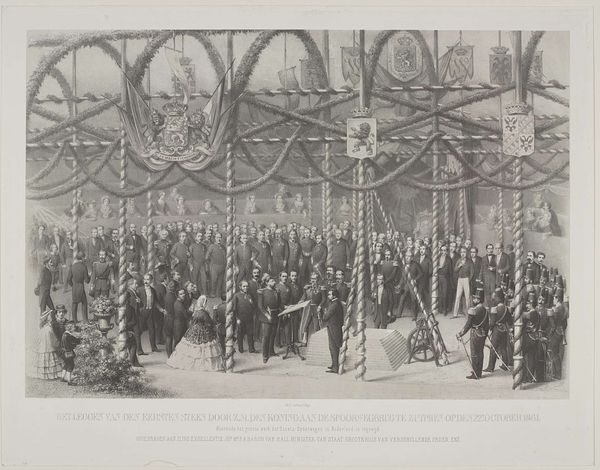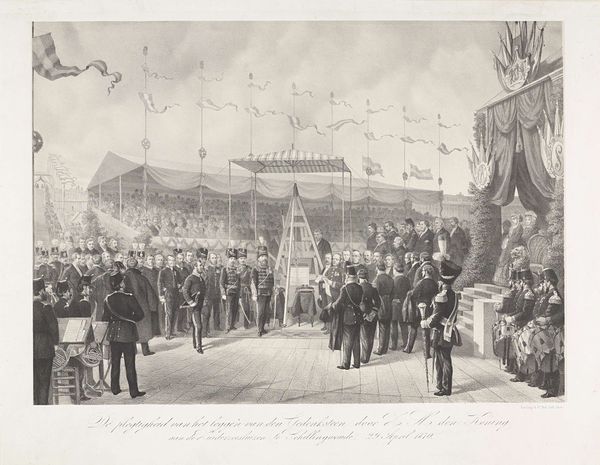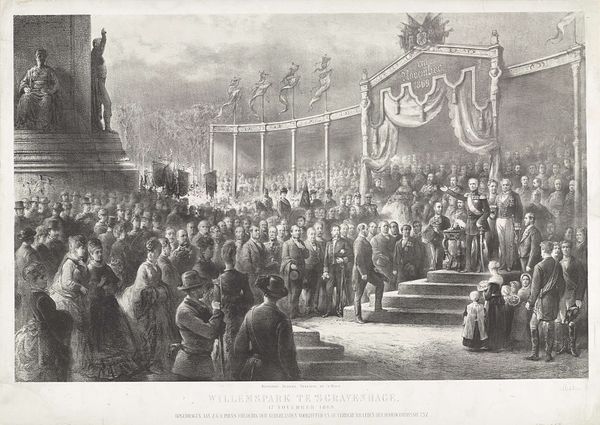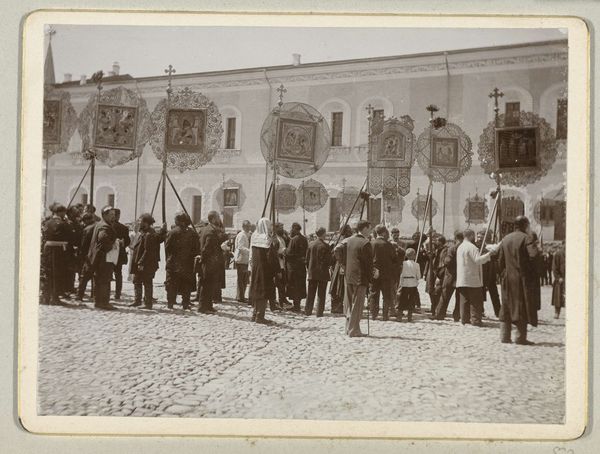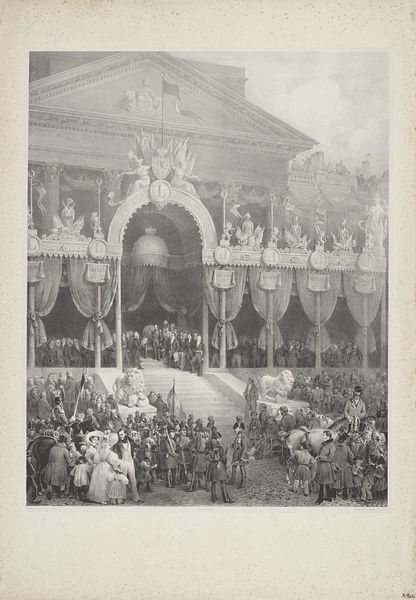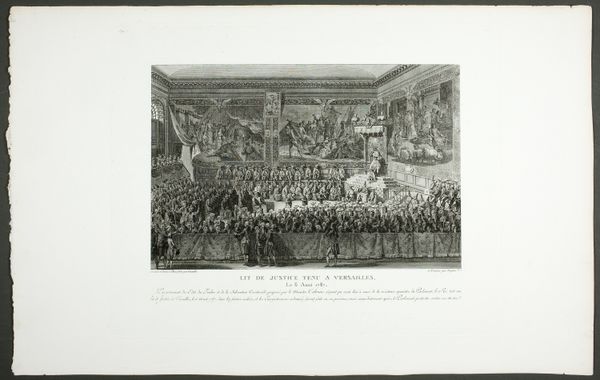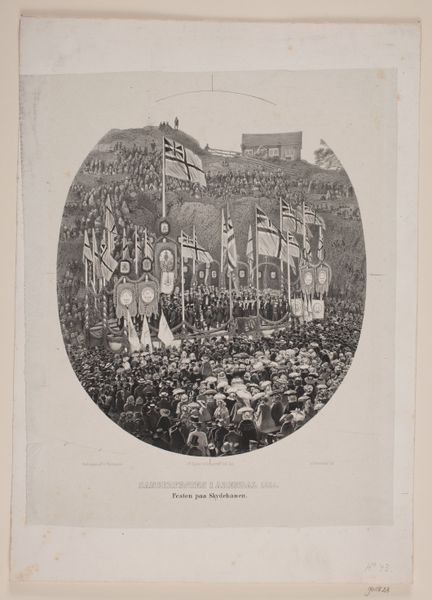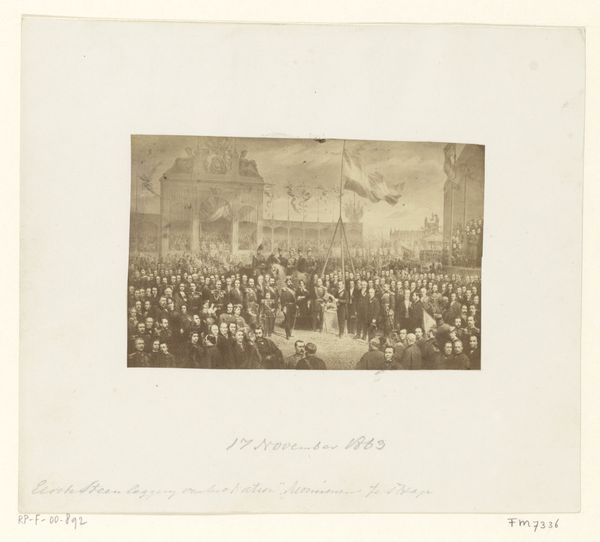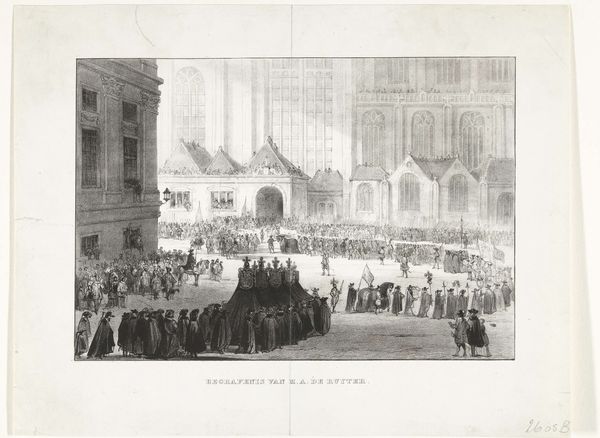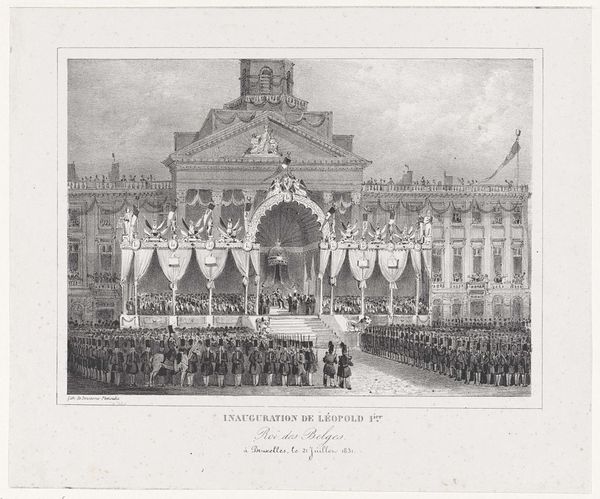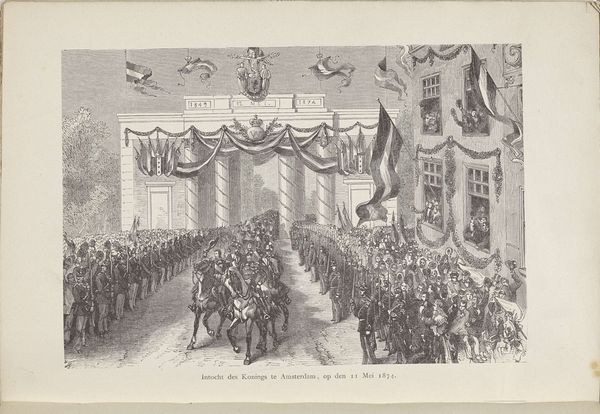
print, engraving
# print
#
19th century
#
cityscape
#
history-painting
#
engraving
Dimensions: height 661 mm, width 917 mm
Copyright: Rijks Museum: Open Domain
Curator: Immediately striking is the density of the crowd; a sea of faces meticulously rendered in monochrome. The sheer level of detail is quite astounding, given this is an engraving. Editor: Indeed. Let's provide some context. This print, dating from after 1873, is titled "De eerstesteenlegging van Het Hationaal Monument," which translates to "The Laying of the Foundation Stone of the National Monument." It was created by Adrien Canelle. Curator: And what a record of civic pride. Consider the layers of symbolic representation present, the central monument in early construction surrounded by representatives of military, government, and civic life. Notice the strong centralizing lines drawing the viewers’ eyes towards the dignitaries and the flag—everything serves to emphasize the unity of purpose. Editor: I’m drawn to how the architecture in the background subtly echoes the formation of the crowd. Canelle is making a clear statement here about continuity and solidity through the implied connection of building and population. But is this not a sanitized portrayal? An idealistic rendering designed to project an image of harmonious unity, obscuring any underlying social tensions? Curator: The visual language undoubtedly favors stability. But engravings like these also played a role in solidifying national identity and promoting a collective memory of grand events. Look at the strategic placement of each figure, from the uniformed officers to the regular citizens; each one underscores their participation in a momentous occasion. Editor: I concede the point. It does function as a form of visual propaganda; even its precise linear construction adds an authoritative air. How effectively prints like these helped cement support is open to question, though it cannot be denied their intent to mold a singular perception. Curator: Perhaps so. In summary, Canelle’s engraving offers a fascinating intersection: it reveals much about representational artistic choices and equally hints at the broader societal functions such artworks came to perform during moments of national building. Editor: Well said; seeing its impact within its period enhances my sense of both Canelle's technical mastery, plus its strategic placement inside contemporary social discourse; both aspects merge towards something insightful still present across years and meanings attached even right this moment.
Comments
No comments
Be the first to comment and join the conversation on the ultimate creative platform.
